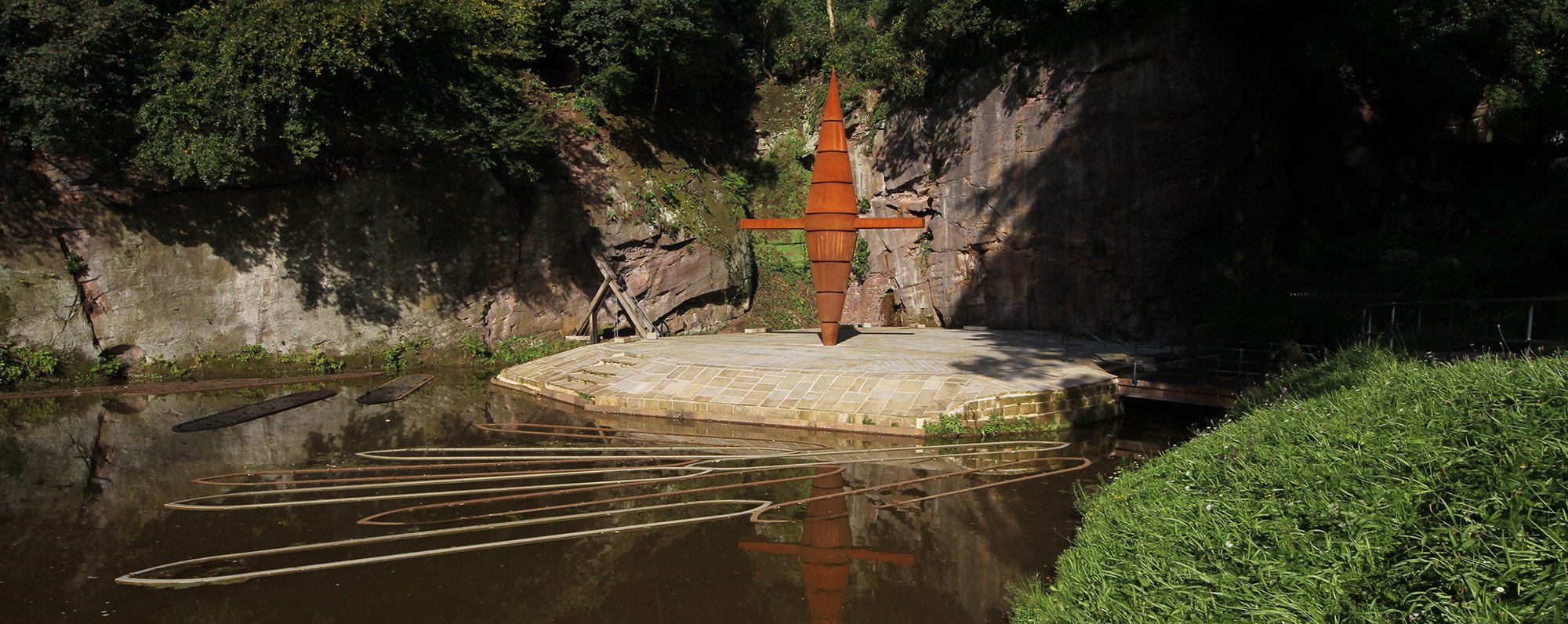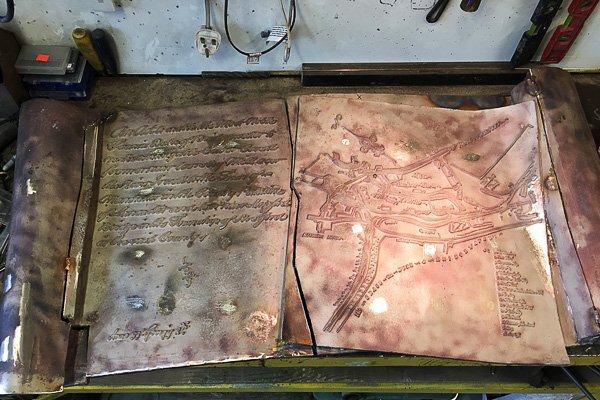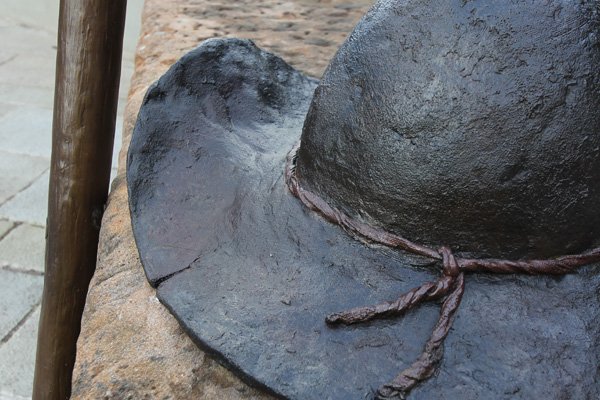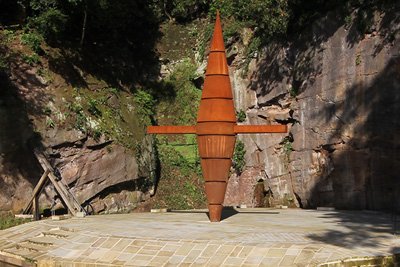Worsley Delph
Worsley Delph is the start of 46 miles of tunnels that lead to a network of underground mines which began in the 1750's with the Duke of Bridgewater creating the Bridgewater Canal to transport coal to Manchester. Arguably this was the first industrial canal system in the UK and heralded the age of canal building and industrialisation throughout the country.
2 years ago we were asked to create interpretive sculptures which hint at what it would have looked like over a quarter of a century ago as day to day life was carried out in the Delph.
Perhaps the most striking of the new art works is the towering steel structure that now stands tall on the island area of the Delph. This is a reworking of something that was once there – something that was described by Arthur Young back in 1770 as ‘a crane of curious construction, used for heaving the stones out of the quarry into the barges’. The material used in this piece is cor-ten steel, a vivid orange colour which is a nod to the fact that the Bridgewater Canal is famously orange.
The viewing platform is a new feature of the Delph. We chose bronze as the material here - something that is hard wearing and also very tactile for the visitor. The first piece you come to is a reproduction of the Act of Parliament 1659 that set the whole canal system in motion. In order to make this we contacted the Houses of Parliament who pulled out the original scroll from their archive. We used cutting-edge digital techniques to remaster this ready for casting. Underneath this piece is a map of the underground canal system. We really liked the format of this map and used it again on the steps that take you down the viewing platform - each step is another branch of the underground mines.
Central to all the art works is the fact that it was people who were very much at the heart of all the hard work that was going on in Worsley Delph. We wanted to animate the space so that the visitor could imagine who might once have been working there. We did this through including miners' hats - one from the 1750s when the story started, right up to one from the 1960s. You will also see a pickaxe and a shovel, tools that would have been hard at work during the mines’ heyday.
The replica coal cart sits in the middle section of the viewing platform. Again we wanted to give the viewer the thought about the people who would have used such an object. To do this we included a harness which really animates the piece. The cart would have been pulled by women who were known as "drawers" as they pulled the coal through the tunnels with chains about their waist. An added dimension here is in the individual pieces of coal you will find they are intricately engraved with details telling stories of what it was like to be a young child in the mines back then.
A miner’s lamp from 1930's, still made locally today in Eccles, lights up a newspaper front page. The newspaper - the Farnworth & Worsley Journal from 18 July 1968 - has a headline about the Worsley mines closing. Using a bit of artistic license we made up this headline but everything else about this newspaper is real. Again using cutting edge digital techniques we faithfully recreated the layout and advertisements from this day in history.
We worked closely with the landscape architects Urban Vision and main site contractors Casey Group to ensure all the pieces were constructed to be resilient and permanent features which would stand the test of time.

















